WHAT IS ELECTRICITY?
Electricity is a form of energy. Electricity is the flow of electrons. All matter is made up of atoms, and an atom has a center, called a nucleus. The nucleus contains positively charged particles called protons and uncharged particles called neutrons. The nucleus of an atom is surrounded by negatively charged particles called electrons. The negative charge of an electron is equal to the positive charge of a proton, and the number of electrons in an atom is usually equal to the number of protons. When the balancing force between protons and electrons is upset by an outside force, an atom may gain or lose an electron. When electrons are "lost" from an atom, the free movement of these electrons constitutes an electric current.
Electricity is a basic part of nature and it is one of our most widely used forms of energy. We get electricity, which is a secondary energy source, from the conversion of other sources of energy, like coal, natural gas, oil, nuclear power and other natural sources, which are called primary sources. Many cities and towns were built alongside waterfalls (a primary source of mechanical energy) that turned water wheels to perform work. Before electricity generation began slightly over 100 years ago, houses were lit with kerosene lamps, food was cooled in iceboxes, and rooms were warmed by wood-burning or coal-burning stoves. Beginning with Benjamin Franklin's experiment with a kite one stormy night in Philadelphia, the principles of electricity gradually became understood. In the mid-1800s, everyone's life changed with the inventionof the electric light bulb. Prior to 1879, electricity had been used in arc lights for outdoor lighting. The lightbulb's invention used electricity to bring indoor lighting to our homes.
Electricity wants to be on the ground. Sometimes it might try to go through you to get to the ground.To prevent this from happening follow these important safety
tips.
1. Never touch any outdoor wires with your body or any other objects.
2. Watch out for overhead wires when you're climbing trees, if you're using a ladder, or any tall objects.
3. Keep electrical appliances and toys away from all sources of water.
4. Watch out for damaged cords on outside (or inside) electrical equipment.
5. Stay away from electric fences.
6. When flying a kite, model airplane, or balloons:
- Stay away from wires and anything touching them.
- use materials that do not conduct electricity to make a kite.
- Don't fly toys in the rain.
7. Don`t even touch an outlet.
8. When unplugging something, always pull by the plug not by the cord.
9. Limit the number of plugs plugged into each outlet.
10. Watch out for damaged plugs. Call an adult if you see one.
11. Never let cords run through doorways or under carpets
- Never play with electrical cords, wires, switches, or plugs.
- Stay away from fallen power lines. Tell an adult if you see a fallen line.
- Never use a hairdryer or play an electrical radio or television near a bathtub or sink.
- Before you climb a tree, look up. If a power line is nearby or touching, stay away from the tree.
- Never touch anything that runs on electricity when your hands are wet.
- Fly kites and model airplanes in a wide open field or park—never near overhead electrical wires.
- Never climb utility poles or electrical towers.
- Stay away from substations and transformers (green boxes).
Replace defective extension cords promptly.
Don't even think about bypassing GFCI protection.
Handle metal studs carefully. Move slowly around metal framing members.
Do not use a trigger hold button on a power tool, ever.
Don't use borrowed tools.
Keep your back straight when lifting. Ask for help if needed.
If a fluorescent fixture is falling, do not try to catch it.
Use eye protection when ever chipping or drilling.
Don't notch ladders to cut conduit.
Make sure your work boots are non conducting type.
Keep a hand full of change handy for emergency phone calls.
Wear a long sleeved shirt when drilling metal overhead.
Follow safety rules of your company.
Keep volume on job radio down.
Drink plenty of water to avoid dehydration.
Don't wear a walkman while working.
Learn how to swim if you work near water.
Keep your tetanus shot up to date.
Learn CPR if you can not do it.
Make sure your job car is locked when unattended.
Don't use PVC glue on fire for heat to bend PVC conduit.
Participate in some racquet sport to improve grip.
When working on live circuits, remain insulated and use only one hand.
Don't siphon gas. Don't smoke near gas.
Wear eye protection when working with PVC glue overhead.
Wear a respirator in dusty environments.
Don't leave short pieces of conduit on the floor.
Limit time spent in attics when hot. Don't enter when ever over 100 degrees.
Only use front half of hacksaw blade at end of a conduit cut.
Carry beach umbrella in truck if you work in sun.
Use reverse on drill when starting a hole saw.
Try not to stand on the top of a ladder.
Change blades often on hacksaw.
Apply sun screen when working in the sun for long periods. Wear a hat.
Post someone at the feet of an extension ladder so it won't walk.
Secure ladders during transport.
On decks watch out fort oil slip hazard.
Carry a rill of toilet paper for obvious reasons.
Learn what over-the-counter pain reliever medication works for you.
Electrical & Electronics, Ohm's Law, Formulas & Equations
| Fundamentals: Electric Laws − Formulary − Equations | ||
| Formula wheel | ▼ | Important formulas |
| Electrical engineering laws | Electronic engineering laws | |
 | ||
Tip: The electrical power triangle (power formula)
The magic triangle can be used to calculate all formulas of the "electric power law". You hide with
a finger the value to be calculated. The other two values show then how to do the calculation.
a finger the value to be calculated. The other two values show then how to do the calculation.
| AMPS= | WATTS÷VOLTS | I = P ÷ E | A = W ÷ V |
| WATTS= | VOLTS x AMPS | P = E x I | W = V x A |
| VOLTS= | WATTS ÷ AMPS | E = P ÷ I | V = W ÷ A |
| HORSEPOWER= | (V x A x EFF)÷746 | ||
| EFFICIENCY= | (746 x HP)÷(V x A) |
| AMPS= | WATTS÷(VOLTS x PF) | I=P÷(E x PF) | A=W÷(V x PF) |
| WATTS= | VOLTS x AMPS x PF | P=E x I x PF | W=V x A x PF |
| VOLTS= | WATTS÷AMPS | E=P÷I | V=W÷A |
| VOLT-AMPS= | VOLTS x AMPS | VA=E x I | VA=V x A |
| HORSEPOWER= | (V x A x EFF x PF)÷746 | ||
| POWERFACTOR= | INPUT WATTS÷(V x A) | ||
| EFFICIENCY= | (746 x HP)÷(V x A x PF) |
| AMPS= | WATTS÷(1.732 x VOLTS x PF) | I = P÷(1.732 x E x PF) |
| WATTS= | 1.732 x VOLTS x AMPS x PF | P = 1.732 x E x I x PF |
| VOLTS= | WATTS÷AMPS | E=P÷I |
| VOLT-AMPS= | 1.732 x VOLTS x AMPS | VA=1.732 x E x I |
| HORSEPOWER= | (1.732 x V x A x EFF x PF)÷746 | |
| POWERFACTOR= | INPUT WATTS÷(1.732 x V x A) | |
| EFFICIENCY= | (746 x HP)÷(1.732 x V x A x PF) |
Core Unit III: Electricity
D. Electric Power and Energy
Key Concepts
In an electric circuit, power is the rate at which energy is used.
The derived unit for power is the watt.
1 watt = 1 joule/second
The following relationships for power in an electric circuit can also be developed:
P = VI
1 watt = 1 volt . ampere
= 1 (joule/coulomb)/(coulomb/second)
= 1 joule/second, etc.
P = I2R
1 watt = 1 ampere2 . ohm

1 watt = 1 volt2/ohm
The power rating shown on electrical appliances gives a comparative indication of the cost of operating those appliances (not taking efficiencies into account).
The energy consumed by an electrical appliance depends on its power rating and the length of time it is operating.
E = Pt
The joule is too small to measure electrical energy consumption. More common are the megajoule (MJ), or the kilowatt . hour (kW . h).
1 MJ = 1 x 106 J
= 1 x 106 W . s
1 kW . h = 3.6 MJ
= 3.6 x 106J
The cost of using electricity can be calculated if the amount of energy used is known. (Some physics texts oversimplify this topic. They do not mention anything about base rates and minimum monthly charges which are paid regardless of usage, sliding usage scales, or discount rates paid by industrial and other "power users." To determine accurate costing of electrical rates, check with the utility company. Rates are subject to change from time to time.)
The demand for electrical energy has increased dramatically in recent years.
Conserving electrical energy is important. It saves the consumer money, and reduces the pressure being placed on the environment.
"Discounts" for excessive use are offered by electrical utility companies in some countries, while in other countries users pay a premium for excessive use. These are two different pricing policies.
The production of electricity from various sources differs throughout Canada. Each method used has a particular impact on the environment. Investigate the Saskatchewan scene.
Learning Outcomes
Students will increase their abilities to:- Define power.
- Express the correct units for power.
- Develop various different relationships for power in an electric circuit.
- Use a variety of expressions for electrical power to solve problems.
- Explain how the power rating on electrical appliances can assist a person in making wise decisions as a consumer.
- Explain why the joule is not normally used as a unit to measure electrical energy consumption.
- State two common units used to measure electrical energy consumption.
- Solve problems involving energy in electric circuits.
- Identify the main ways that are used to produce electric in Canada.
- Identify the impact each main method used to produce electricity has on the environment.
- Compare the main methods used to produce electricity in Canada and determine which are likely to be most and least desirable. Debate the choices selected.
- Suggest alternative methods of producing electricity which may have potential for future development.
- Understand overloading of circuits in the home (circuit breakers and fuses).
Teaching Suggestions, Activities and Demonstrations
- Compare the energy used in a given amount of time when using appliances having different power ratings.
- Have students design and conduct an activity to determine the cost of using electricity for a "typical" household in Saskatchewan over a given amount of time.
- Connect a power supply to a small electric motor. Connect an ammeter, a voltmeter, and a rheostat to the circuit. Arrange the motor so that it can lift a few small weights vertically. Lift the weights, recording the meter readings and the time it takes to lift the weight. Determine the electrical energy input to the motor: E(in) = VIt. Calculate the energy output from the motor, based on the change in potential energy of the object being lifted:
E(out) = mgh Determine the efficiency of the motor:
 Repeat with different loads or different rheostat settings. Determine if the efficiency depends on these factors.
Repeat with different loads or different rheostat settings. Determine if the efficiency depends on these factors.
Disconnect the power supply. Allow the weights to drop to the ground. Take readings from the voltmeter and the ammeter. If a reading is noticed on the meters, speculate as to what is acting as the source of the electromotive force. If a bigger load is used, causing the disconnected motor to spin faster, ask the students to predict and observe what happens to the readings on the voltmeter and the ammeter.
- Compare the cost of using electricity or the pricing policies in Saskatchewan with that of other provinces or other countries.
- Compare pricing policies which offer discounts or premiums for increased use. Assess the reasons why those different policies are used.
- Using an electric calorimeter connected in a circuit, record the change in temperature in the circuit after a certain amount of time. Record current and electric potential readings in the circuit. Determine the electric energy input to the calorimeter and the electric equivalent of heat produced. Compare experimental and accepted values and account for any discrepancies. Instead of, or in addition to, an electric calorimeter, a kettle can be used. An interesting comparison of efficiencies can be made for the two types of heating devices.
- Mount a ten, twelve, or fourteen speed bicycle on a set of rollers or a training stand. (Check with students or other bicycle enthusiasts for this. Alternatively, use a stationary exercise cycle, an ergometer, or even a set of training wheels mounted slightly below the rear wheel.) Mount an electric bicycle generator and light assembly to the bicycle. Connect a voltmeter and ammeter to the circuit. Have different students pedal the cycle at their top speed (warming up properly beforehand).
Take current and electric potential difference readings to determine the maximum electric power produced. Compare this to the way they would have to pedal to sustain a certain power output for a longer period of time. (The average person can put out about 75 watts.)
If heart rate monitors, stethoscopes, or sphygmomanometers are available, take pulse readings at regular intervals. Monitor blood pressure, skin temperature, or other "vital signs." Use these as possible indicators of aerobic capacity. (Have students research how medical stress tests are performed. Integrate this activity with Physical Education. Visit a local hospital which performs stress tests. Find out how an electrocardiograph or an electroencephalograph works.) This activity could also be tied into the unit on Animal Systems in Biology 30.
Discuss the energy transformations taking place to produce the electrical energy. If the bicycle can be moved outdoors, perform an activity to determine the work done to ride the bicycle a measured distance along a level surface. (The students can determine how the experiment would have to be designed. This is not a simple activity. Many variables are involved.) -
Electromagnetic induction
While Oersted's surprising discovery of electromagnetism paved the way for more practical applications of electricity, it was Michael Faraday who gave us the key to the practical generation of electricity: electromagnetic induction. Faraday discovered that a voltage would be generated across a length of wire if that wire was exposed to a perpendicular magnetic field flux of changing intensity.
An easy way to create a magnetic field of changing intensity is to move a permanent magnet next to a wire or coil of wire. Remember: the magnetic field must increase or decrease in intensity perpendicular to the wire (so that the lines of flux "cut across" the conductor), or else no voltage will be induced:

Faraday was able to mathematically relate the rate of change of the magnetic field flux with induced voltage (note the use of a lower-case letter "e" for voltage. This refers to instantaneous voltage, or voltage at a specific point in time, rather than a steady, stable voltage.):

The "d" terms are standard calculus notation, representing rate-of-change of flux over time. "N" stands for the number of turns, or wraps, in the wire coil (assuming that the wire is formed in the shape of a coil for maximum electromagnetic efficiency).
This phenomenon is put into obvious practical use in the construction of electrical generators, which use mechanical power to move a magnetic field past coils of wire to generate voltage. However, this is by no means the only practical use for this principle.
If we recall that the magnetic field produced by a current-carrying wire was always perpendicular to that wire, and that the flux intensity of that magnetic field varied with the amount of current through it, we can see that a wire is capable of inducing a voltage along its own length simply due to a change in current through it. This effect is called self-induction: a changing magnetic field produced by changes in current through a wire inducing voltage along the length of that same wire. If the magnetic field flux is enhanced by bending the wire into the shape of a coil, and/or wrapping that coil around a material of high permeability, this effect of self-induced voltage will be more intense. A device constructed to take advantage of this effect is called an inductor, and will be discussed in greater detail in the next chapter.
Magnets and electric current - Electromagnets
By winding the wire into a coil we can strengthen the magnetic field. Electromagnets are made from coils like this.
Making an electromagnet stronger
We can make an electromagnet stronger by doing these things:- wrapping the coil around an iron core
- adding more turns to the coil
- increasing the current flowing through the coil.

The magnetic field of an electromagnet
The magnetic field around an electromagnet is just the same as the one around a bar magnet. It can, however, be reversed by turning the battery around.Unlike bar magnets, which are permanent magnets, the magnetism of electromagnets can be turned on and off just by closing or opening the switch.
Magnets and electric current - Electric bell
Electric bell
Electric bells like the ones used in most schools also contain an electromagnet.- When the current flows through the circuit, the electromagnet makes a magnetic field.
- The electromagnet attracts the springy metal arm.
- The arm hits the gong, which makes a sound.
- The circuit is broken now the arm is out of position.
- The electromagnet is turned off and the springy metal arm moves back.
- The circuit is complete again.
| Index Magnetic field concepts | ||||||
| Go Back |
Electric and Magnetic Sources
| Index Magnetic force Magnetic field concepts | ||||||
| Go Back |
Bar Magnet and SolenoidThe magnetic field produced by electric current in a solenoid coil is similar to that of a bar magnet.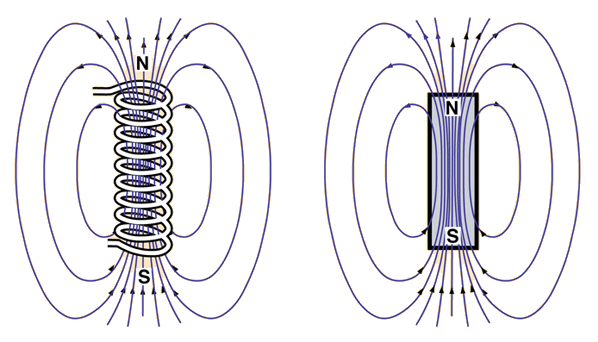
| Index Magnetic field concepts | ||
| Go Back |
Iron Core SolenoidAn iron core has the effect of multiplying greatly the magnetic field of a solenoid compared to the air core solenoid on the left.
| Index Magnetic field concepts | ||
| Go Back |
| Index Magnetic field concepts | ||

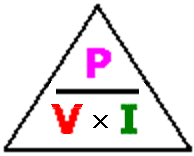
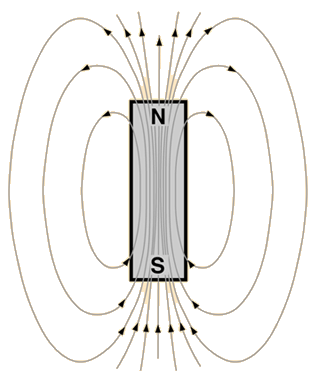
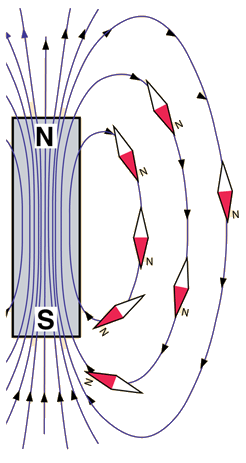
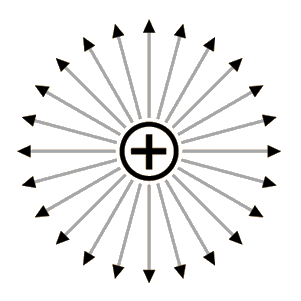
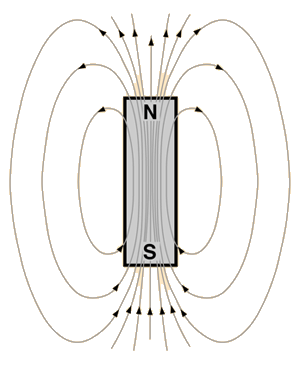

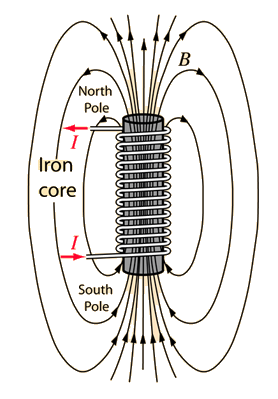

No comments:
Post a Comment